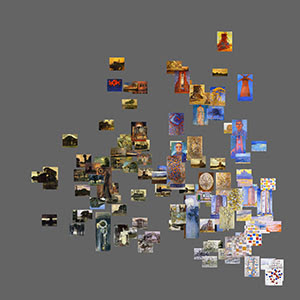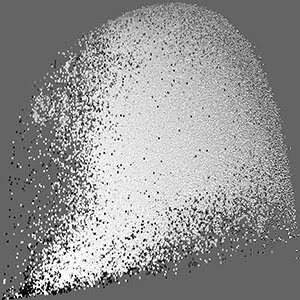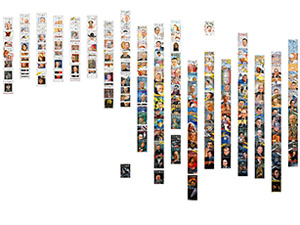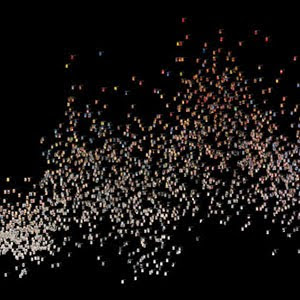Today we take photos for granted. They are our memories of holidays and parties, of people and places. An explosion of cameras and places to share them (Facebook, twitter, instagram) means that our lives today are documented, not by an occasional oxidizing of silver halide but constantly recorded with GPS coordinates and time stamps. However it hasn't always been like this - the oldest photograph is less than 200 years old[1].
So how many "Kodak memories" has humanity recorded? How fast are we snapping photos today? And how many of these treasured memories are confined to our shoeboxes as lost relics of a pre-digital era?
First we quantify how many analog photos humans have taken. There is a surprising dearth of direct data, but we can make some reasonable estimates. It is safe to say that at most a few million photos were snapped before the invention of the first consumer camera - Kodak Brownie in 1901[2]. From that time we can use Kodak's employment statistics as a reasonable proxy for how many photos were taken (Kodak’s dominance of those "Kodak moments" persisted for most of the 20th century). More physical photos needed more physical cameras and rolls of print[3]. Throughout this period photos became more and more mass-market - by 1960 it is estimated that 55% of photos were of babies. From 1984 onwards the Silver Institute and PMIA published estimates of how many physical photos the world was snapping each year (silver halide being an important chemical in film)[4]. Year after year these numbers grew, as more people took more photos - the 20th century was the golden age of analog photography peaking at an amazing 85 billion physical photos in 2000 -- an incredible 2,500 photos per second.
At the dawn of the new millennium a new technology (that Kodak itself invented) was reshaping the whole industry - the digital photo. When the first few hundred thousand digital cameras shipped in 1997 their memory was strictly limited (in fact cameras like the Sony Mavica took floppy disks[5]!). Digital cameras are now ubiquitous - it is estimated that 2.5 billion people in the world today have a digital camera[6]. If the average person snaps 150 photos this year that would be a staggering 375 billion photos. That might sound implausible but this year people will upload over 70 billion photos to Facebook, suggesting around 20% of all photos this year will end up there[7]. Already Facebook’s photo collection has a staggering 140 billion photos, that’s over 10,000 times larger than the Library of Congress.[8]

Even accounting for population growth the exponential growth of photos is incredible (we take 4 times as many photos as 10 year ago). Today every party, birthday, sports game and concert is documented in rich detail. The combination of all these photos is a rich portrait of today, the possibilities of which are illustrated by a tool like
“The Moment”. As photos keep growing we take a clearer and clearer snapshot of our lives and world today - in total we have now taken over 3.5 trillion photos. The kind of photos we are taking has changed drastically - analog photos have almost disappeared - but the growth of photos continues.
.

In the midst of the 3.5 trillion photos that have ever been taken it's easy to forget that the shoebox or album of old photos we have at home is incredibly fragile and special. Every 2 minutes today we snap as many photos as the whole of humanity took in the 1800s. In fact, ten percent of all the photos we have were taken in the past 12 months. And yet, there are still more physical photos hidden in our shoeboxes, hanging on our walls or lost in an album than there are digital photos littering our hard drive. These precious photos of the past 200 years tell us who we are and where we come from. So grab hold of that photo of you as a kid or of your grandparents' wedding and realize just how special it is.
Footnotes
1. The oldest photo of a person dates to 1838;
an image of a busy Parisian street that shows an unknown man getting his shoes shined
2. Check out see some amazing 19th century Civil War photos online
here.
3. In an industry focused on consumer facing innovation labor productivity is assumed to be roughly constant. An anchoring reference of 2.2 billion photos in the US is also used from
here. Reporting on Kodak’s empolyee numbers is available
here.
4. PMIA numbers are used from 1984 to 1998 5.
The Sony Mavica was one of the earliest consumer digital cameras
6. Tomi Ahonen
reports there there are 2.5 billion cameraphones. Almost all people who own dedicated digital cameras also own a phone with a camera.
7. Facebook reported the photo uploads were running at 6 billion per month
here. Estimating the average number of photos taken is difficult given the broad user base - from photo fanatics snapping hundreds of photos per week on their SLRs to the vast mass of camera owners in developing nations with just a simple camera phone.
8. Instagram reported they have 150 million photos to TechCrunch
here, Flickr's info on their 6 billion strong collection is
here.



